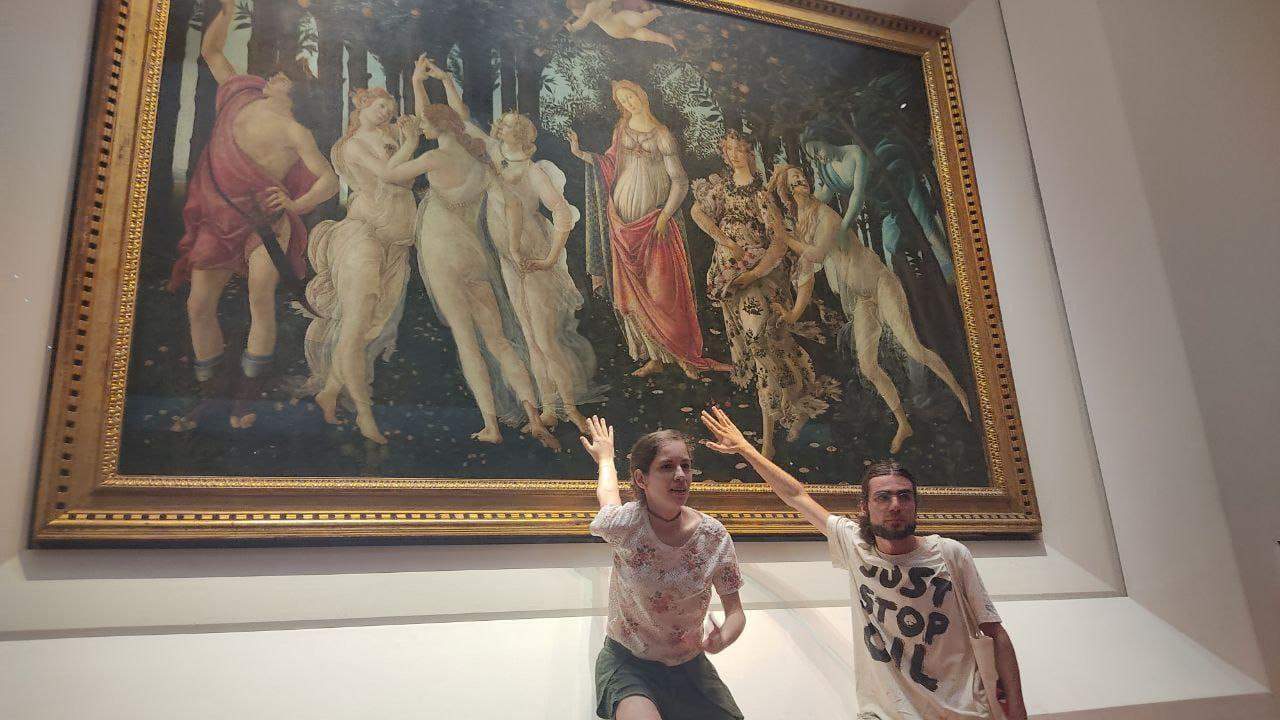Does ICOM support environmentalists' actions in museums? No: here's the thing
DoesICOM, the main body representing museums internationally, really comment positively or support in full the actions of environmentalists who have targeted works of art in museums, with actions in which some members of environmental associations have glued themselves to the frames of paintings or poured food on the works? In the past few days, ICOM has issued a statement in which it took a position, and which has been the subject of misleading readings by some environmental associations as well as by some press organs: indeed, the idea that ICOM is endorsing the protests has been passed around, and this has raised much concern on social media. But this is not the case.
The statement, meanwhile, is very clear: ICOM, in fact, stated that it “wishes to acknowledge and share both the concerns expressed by museums about the safety of collections and the concerns of climate activists as we confront an environmental catastrophe that threatens life on Earth,” and that it sees “the choice of museums as a backdrop for these climate protests as a testament to their symbolic power and relevance in discussions about the climate emergency.” The rest of the statement does not go into the substance of the protests but emphasizes the key role of museums in initiating and supporting climate action with the institutions’ target communities.
ICOM, in short, is not explicitly talking about supporting the protests of environmental groups, especially since the first thought (in an official communiqué, the order in which concerns are presented means something) is for the concerns expressed by museums. Moreover, acknowledging that the choice of museums is a testament to “their symbolic power and relevance in discussions of the climate emergency” does not automatically mean approving of the way the protest is being conducted. ICOM, Adele Maresca Compagna, chair of ICOM’s Italian committee (which will take a position tomorrow in a statement), tells us by email, “supports the cause” of environmentalists “but not the method.” It is difficult, after all, to remain insensitive to the environmentalists’ cause (climate change affects all humanity): more complex, however, to support a mode of protest that targets works of art.
Moreover, it should be specified that ICOM is not a bloc that always moves united: often the national committees, in fact, have taken particular positions (think, for example, of the whole discussion on the definition of a museum: on that occasion, for the first elaboration there was disagreement between the central committee in charge of designing the new definition, and the national committees). And this is also the case here, with some national committees harshly condemning the protests of environmentalists in museums.
Such is the case with the Spanish committee, which in a note published on Nov. 8 solidarized with “all museums that have suffered acts of vandalism for alleged claims against climate change,” adding, “We condemn those actions that are only acts of vandalism against a heritage that belongs to the entire community, and that also alter the normal development of a museum, giving a false image of unsafe spaces and unsupportive institutions.” On Nov. 14, however, it was the turn of the Swedish committee, which spoke of “disturbing” attacks in a note posted on its website: “The attacks by climate activists on several famous art museums in Europe are disturbing in several ways. ICOM’s Swedish committee is following the developments with the hope that no further attacks will occur. In addition to the actual damage caused to irreplaceable cultural heritage objects, these activist actions create anxiety among museum staff and visitors alike. There is a strong risk that openness and accessibility to the common cultural heritage will be restricted. The climate footprint is something everyone needs to take responsibility for, and the way forward is dialogue and collaboration, not pitting different sectors against each other.”
Again, last Nov. 3, taking a stance, in an interview published on the ICOM France website, French committee chair Emilie Girard cautioned about the possible risks to which even glass-protected works are subjected: “We risk an increase in the tension of museum staff, and a potential worsening of reception conditions in museums. Some facilities are starting to ask for bags to be deposited at the entrance, which is the implementation of measures that provide for a more limited reception than might have been the case. Moreover, zero risk, even on a work under glass, does not exist. Some frames are works in themselves. Resting your hand or forehead on a frame can cause deterioration that requires subsequent restoration. Also, it is enough that there is not perfect adhesion to the canvas for there to be product seepage. There are always risks, which must be taken into account.”
In short, ICOM is not really giving the impression, nor does it want to give the impression, that it is endorsing the actions of environmentalists. While ICOM recognizes the importance of fighting climate change, it does not support the way this fight is being waged by those who rail against artworks in museums. Museums, ICOM stressed, are allies in the fight against climate change. And being allies, they should not be the object ... of friendly fire.
Image: activists glued to Botticelli’s Primavera during a protest
 |
| Does ICOM support environmentalists' actions in museums? No: here's the thing |
Warning: the translation into English of the original Italian article was created using automatic tools. We undertake to review all articles, but we do not guarantee the total absence of inaccuracies in the translation due to the program. You can find the original by clicking on the ITA button. If you find any mistake,please contact us.




























